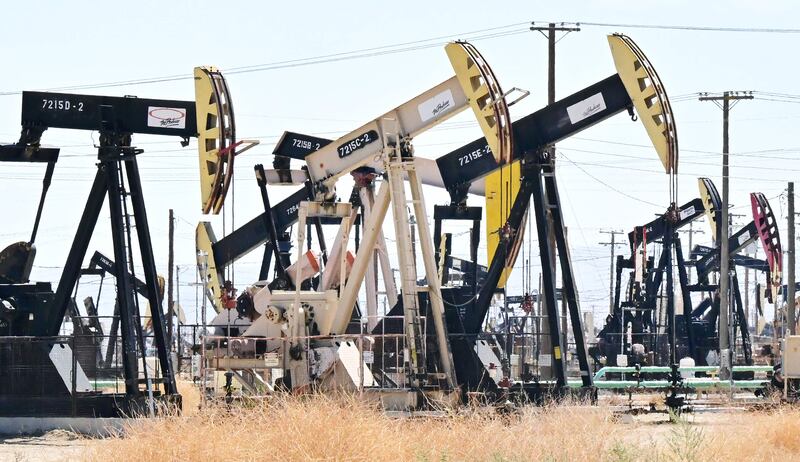The outlook for crude prices over the next 12 months remains positive, even as the US plans to release more oil from its Strategic Petroleum Reserve (SPR).
In a research note on Wednesday, UBS said further releases from the SPR would not fix any structural imbalance caused by years of underinvestment and the world’s “ever-rising thirst for oil”.
US President Joe Biden will announce on Wednesday that he is putting 15 million barrels on the market, the final tranche of oil from a programme announced early this year to release 180 million barrels of crude from the SPR.
Washington may consider more releases in the coming winter months if energy prices surge.
The Swiss lender, which does not expect further “large” sales from the emergency reserve, said oil markets would remain tight over the coming years due to chronic underinvestment in new projects and an increased focus on capital discipline in the US shale patch.
US shale producers, usually quick to raise output in response to oil price increases, have come under pressure from shareholders to boost returns and profitability.
“Higher prices are therefore needed to incentivise supply and slow demand growth,” UBS said. “However, the market is likely to be less tight than we initially expected for the next 12 months because of various headwinds.”
Brent crude gained around $14 after the Opec+ alliance of oil-producing countries decided to slash its collective output by 2 million barrels per day, the biggest output cut since the onset of the Covid-19 pandemic in 2020.
Prices have since come under pressure due to recession concerns, the war in Ukraine and the likelihood that China will extend its zero-Covid policy.
Prices go could higher once an EU ban on Russian crude oil comes into effect later this year, UBS said.
The EU’s deadline to stop importing Russian waterborne crude is on December 5 while a ban on refined products takes effect February 5.
Russia, which is currently embroiled in a conflict with Ukraine, will continue exporting crude to some European countries after the ban. However, it will still need to find a new market for more than 1 million bpd of crude by December.
China, the world’s largest crude oil importer and second-largest economy globally, has been buying discounted crude oil from Russia since the war began. However, it will be less inclined to increase its energy reliance on Moscow.
“While Russian crude trades at a discount to market prices, exports to China and India have not increased further,” said UBS.
“We believe China may be aiming to avoid making Europe’s mistake of becoming too dependent of one country, preferring to keep the maximum share of one exporter at 20 per cent.”
Pandemic-related mobility restrictions have limited oil demand growth in China.
Since 2020, Beijing has pursued a zero-Covid policy that calls for complete lockdowns, even in the case of minor outbreaks. Frequent lockdowns have affected China’s large manufacturing sector and disrupted global supply chains.
Earlier this week, President Xi Jinping hailed the country’s pandemic policy as a major achievement, in a sign that the government would persist with its current approach despite the impact on the global economy.
UBS expects a “more meaningful” relaxation of pandemic rules to only be announced after China’s “Two Sessions”, annual plenary meetings of the country's parliament that discuss economic and social policies. The next one will be in March 2023.
Apart from demand concerns, the US dollar has also weighed on oil prices this year.
The US Dollar Index, a measure of the value of the greenback against a weighted basket of major currencies, has gained more than 5 per cent over the past three months, in part due to the Federal Reserve’s aggressive interest rate increases.
“For oil consumer nations whose currencies are not linked to the greenback, oil prices have increased much more in local currency terms,” said UBS.






